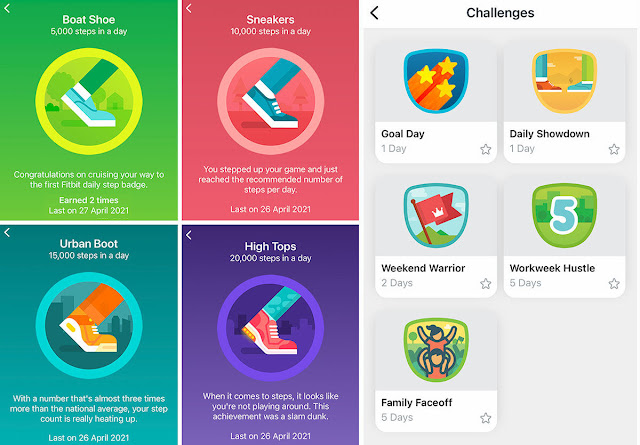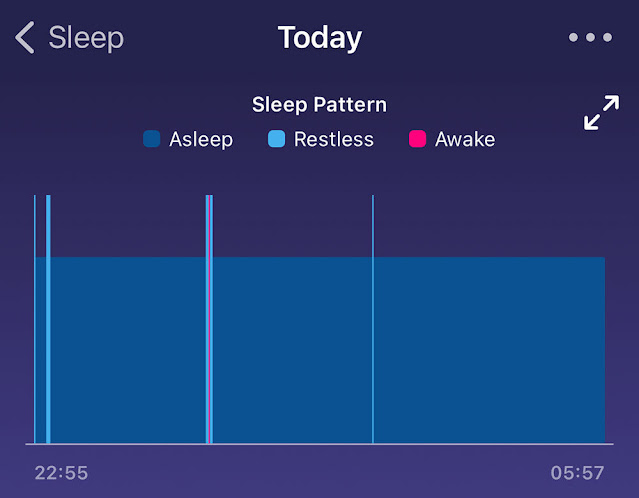The new Fitbit Ace 3 is a kid-friendly activity tracker with a hardy design, plus a few extras.
Should I Buy The Fitbit Ace 3?
Pros
- In-app Parent and Kid Views
- Hardy, colourful design
- Family challenges
Cons
- Underpowered compared to adult Fitbits
- May not appeal to entire target age range
Our Verdict
Price When Reviewed
- $79.95
Fitness and health are, of course, just as important for kids as adults, and Fitbit has an activity tracker designed especially for young ones in the new Fitbit Ace 3 - aimed at children aged 6 to 12.
The Ace 3 serves as a way to motivate kids to get more active, but in a roundabout way, could also incentivise the whole family to get fitter together (provided everyone involved has a Fitbit of their own to wear).
We take a look at Fitbit's tot-centric tracker to see whether it's the best fit for younger users to track their activity.
What's In The Box?
The tracker sits within a hardy silicone band in one of two two-tone colourways: Black/Sport Red or Cosmic Blue/Astro Green. Unlike other Fitbits, there's just a one-size strap that should fit most children's wrists.
Once unboxed, all that's left to do is set up the tracker using Fitbit's free mobile app (available on both Android and iOS).
Design And Build
While it looks less sleek than any of the ‘adult’ Fitbits in the company's lineup, the Ace 3 isn’t blatantly childish, like many children’s activity trackers.
It's clearly built to withstand the clumsier, knockabout lifestyle of a child, compared to the company's adult-focused trackers and smartwatches; with the tracker's body protected by a wraparound silicone bumper that's integrated into the band.
The silicone strap features a watch-like buckle that is much less likely to become detached compared to the pin-loop fastenings on Fitbit's smartwatches. However, it’s quite easy to push the tracker part out of the strap, so be warned that fidgety-fingered kids might detach and possibly lose it, if not shown how to take proper care of their new gadget.
The Ace 3 is water-resistant to 50m, so can be worn in the shower, bath, swimming pool, and even the sea. Most companies forgo suggesting that their water-resistant products can take a dunking in salt water but Fitbit actively mentions taking the Ace 3 into the ocean, which scores it extra points, in terms of hardiness - based on the company's confident wording.
All that said, unlike other Fitbit trackers, it doesn’t specifically offer swim tracking - even if the in-app manual has a picture of it. This may become a feature to be initiated in some future firmware update, but as of right now it's technically off the table.
Display
The Ace 3's display has more than doubled in size, compared to the 0.7in offering on the blockier Fitbit Ace 2 from 2019.
A 1.47in monochromatic PMOLED touchscreen lets you swipe up and down to see different stats, like steps and Active Minutes but greater customisation over data shown would have been nice. The step counter is small on the first clock face and you have to swipe past another time & date screen before you reach the rest of the stats.
Garmin’s similarly-priced Vivofit Jr 3 boasts a basic colour screen, but it doesn’t offer much more in terms of functionality by comparison, just an aesthetic edge.
Software And Features
The Ace 3 offers a cut-down range of fitness and notification features, compared to Fitbit's 'adult' trackers. It counts steps, logs Active Minutes and monitors basic sleep patterns, but lacks heart-rate tracking.
It’s a little-known fact that the Fitbit Ace 3 actually does include sensors for heart-rate tracking, but they are deactivated and can’t be turned on. This is because it’s basically a cut-down adult tracker, much like the entry-level Fitbit Inspire 2 but in a more robust enclosure for kids.
Fitbit deliberately excludes calorie counting as a feature, in order to avoid contributing to fixations around calories or weight in younger users. Exercise and all-round activity are the driving forces behind the Ace 3.
Motivating Kids To Be More Active
Just showing how many steps they've done in a day is not going to be very interesting to many children.
A Reminders to Move feature prompts the wearer to get off their chair if they haven’t done much for the past 50 minutes and at least 250 steps-per-hour (you set the schedule) is the goal.
There are a much wider range of adult Fitbits and we've tested them all, so you can choose the best Fitbit for you - based on features, style and price.
Fitbit Kids View And Parents View
The Ace 3 has to be paired to a Fitbit Family account, with a parent getting setup first, followed by the child that the Ace 3 is intended for.
Children up to the age of 13 (and 16 in some countries), can’t officially have their own Fitbit account, which is why the Ace line is the only current Fitbit series that supports a separate Kids View and Parents View.
The child wearing the Fitbit Ace 3 will then have access to their own Kid View, where they can see their stats, virtual badges and choose their preferred clock face.
Sleep Tracking
The Ace 3 also measures basic sleep patterns, showing how long your child is asleep, awake, and restless.
Sleep is an incredibly important part of all our lives, but especially for growing kids. If the Ace 3's bedtime reminders help children go to bed a bit earlier, it's worth the investment through that feature alone.
Parents can use the Fitbit app to schedule bedtime reminders, as well as silent alarms that wake their kids with gentle buzzing on their wrists.
Battery
The Ace 3 boasts an impressive eight-day battery life (the Ace 2 had just five), which is plenty, but as for whose responsibility it is to charge the tracker back up when the battery runs dry, that's up to you (and will likely be you).
The Garmin Vivofit Jr 3 has a replaceable, rather than a rechargeable battery, that lasts around a year.
Price And Availability
The Fitbit Ace 3 costs £69.99/US$79.95/AU$99.95/€79.95, making it the cheapest Fitbit of the current lineup.
As touched on earlier, it's available in Cosmic Blue with Astro Green touches or Black with Sports Red. Extra bands cost £19.99/US$24.95/AU$39.95/€24.95, but only the two colourways already mentioned are available at launch. The previous Ace 2 had more accessory options than the Ace 3, although there is the promise of Minions-based Ace 3 models and straps (Despicable Blue and Mischief Black) on the way.
The Vivofit Jr 3 offers more colour options, plus Marvel and Disney Princess themes, while older kids (let's say 10 and up) might be less enamoured by the chunky, colourful aesthetics of the Ace 3 outright.
If so, one option that keeps you (or rather, your child) within the Fitbit infrastructure is to simply snap Inspire 2 bands onto the Ace 3 tracker, although you'll sacrifice some of that all-important hardiness in the process.
Verdict
The Fitbit Ace 3 is specifically designed for children (made most obvious by its robust design and fun animated clock faces) and comes with neat Parent and Kid Views from within the Fitbit app. It does, however, lack a bunch of features you’d find on only marginally higher-priced Fitbit trackers, which is a little frustrating.
Older kids may prefer a more ‘adult’ tracker (like the Inspire 2 - although you'd/they'd have to lie about their age during account setup), but for kids up to the age of around 10, the Ace 3 is a great starting tracker that onboards younger family members into the Fitbit experience and keeps them motivated to move with fun challenges and awards.











0 comments:
Post a Comment